Do you find that choosing the right wall paint and the color palette (among thousands of choices) to paint the interior of your home is a complex and arduous task? Be sure, you are not alone! It’s hard to make a final choice when you don’t know what factors to consider. In addition, the small color charts you find in the store are not always representative of reality.
This article may help you to choose your wall paint and the perfect color palette to your home.
Table of Contents
Learn the terms related to color
Since the first step is research (internet, magazines, in-store, etc.), it is important to know some terms to be well informed.
- Hue is what we commonly call a color (e.g., shade of red, shade of blue).
- The intensity of the hue represents its brightness (light or dark).
- The saturation refers to the dominance of the hue. By going from red to pink, the hue becomes nuanced, therefore less dominant.
- The color wheel, in painting, organizes the 12 colors of the spectrum in a circle. Its main objective is to explain the mixing of colors, to help you identify the families of colors and to visualize the different arrangements and harmonies of colors.

Start by analyzing your room
Instinctively, your first instinct is probably to choose the color for your room from the start. However, it is advisable to choose your color after analyzing your room! It is much easier to choose a paint color that matches your furniture and decor than to choose a decor that matches a color. If needed, most hardware stores can mix a single shade of paint to match your furniture or reference decor.
If you choose paint first, you may find yourself limited to a few options for fabrics, decorations and furniture to match your wall. However, if you base your color palette on an existing product, you’ll have a much better chance of getting a result that matches naturally. Patterned elements are particularly great options, as they often incorporate multiple shades and can serve as the basis for your entire color palette (for a neutral wall paint color, look to the whites and beiges of the pattern).
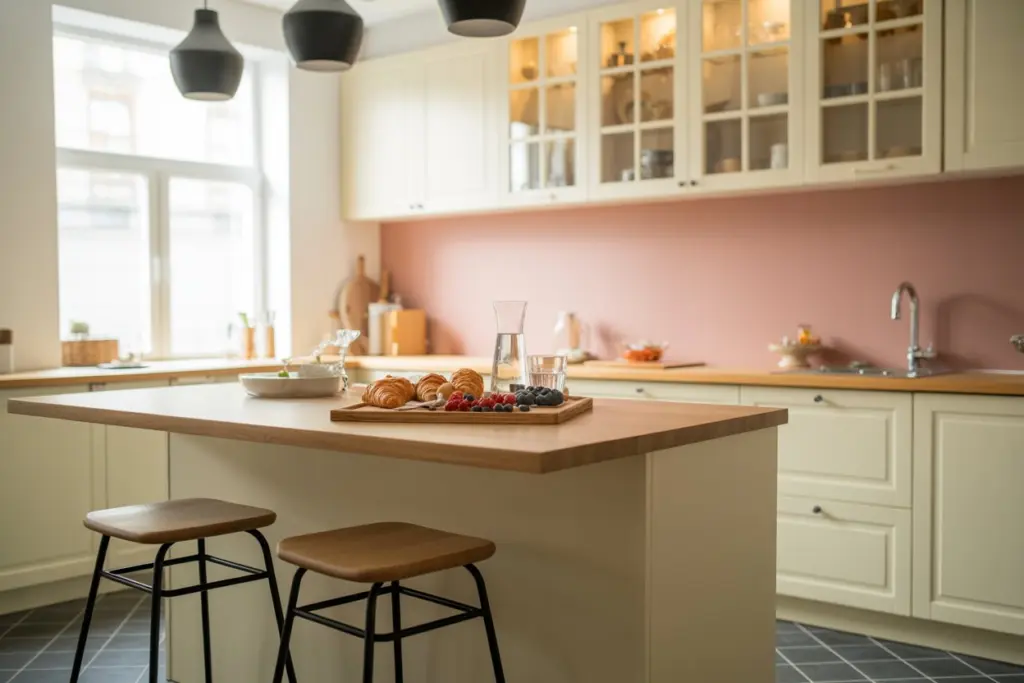
Apply these golden rules
Over the years, many interior designers have established rules to follow in order for a room to be painted to perfection. Try to apply at least one of these rules to maximize your results:
- Decorate from darkest to lightest, vertically. To make a space look good, it’s best to use darker shades for the floor, medium shades for the walls and light shades for the ceiling. The goal is to mimic the outdoor environment and represent it in the room. The outdoor environment is generally darker underfoot (the earth itself), medium when you look straight ahead (buildings, trees, etc.) and lighter towards the sky.
- The three-color rule. A well-balanced room should be composed of three colors.
- The 60-30-10 rule. When painting, divide the colors as follows: 60% of a dominant color (walls), 30% of a secondary color (doors, ceiling, windows, etc.) and 10% of an accent color (accessories and decorations). This ratio ensures that the colors are properly balanced and that there is just enough vibrancy to create visual interest.
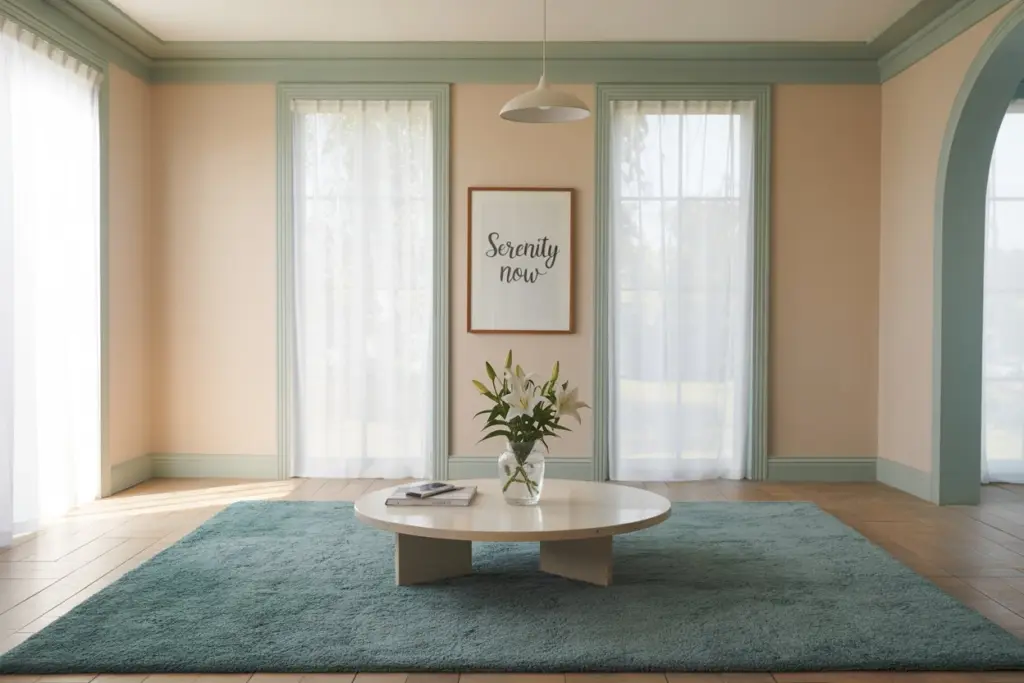
Find the perfect color match
Matching colors is an art that is not mastered by all. Sometimes, we think we are doing the right thing, but the result is not very pleasing to the eye.
Read these tips to better understand how to color your home like a pro.
Similar colors (color wheel)
Opting for colors that are close together on the color wheel – which includes three primary colors, three secondary colors and six tertiary colors – provides a nice balance. To access a color wheel, simply search for a version on the Internet or visit a store that sells artist supplies.
This tool will help you explore the different shades of the chosen colors by playing with the levels of white, gray and black to vary the shades from lighter to darker. With this canvas, you have less risk of making wrong combinations!
Colors that work well together
Do you like bright pieces and beautiful contrasts? Then, rather than choosing colors that are close together on the color wheel, opt for the opposite tactic and use colors that are far apart together. Dare to use yellow with purple, for example. But avoid spreading them evenly across the room: instead, choose the one that will go on the largest wall and the one that will cover the smallest side of the room or tint the decorative accessories: this way you create a pleasant balance.

The tone on tone
When we talk about tone on tone, we are actually talking about monochrome colors. The best way to use them harmoniously is to choose a base color and exploit its different variations, that is to say divergent shades, but of the same color. For example, you could choose an emerald green paint along with forest green and lime green accessories. Then, simply add dynamism by incorporating neutral but contrasting colors, such as black, gray or white.
Compare your favorite with its similar colors
No matter what type of contrast you like, you should never choose a paint color just because it catches your eye. Before you make your final choice, compare it with other similar shades by putting them next to each other to make the right choice. Also compare it to other colors that will be used in the same room or in adjacent rooms. A wise move will save you from regret!
A brightness that can change everything
Before making your final color choices for your living space, keep in mind that natural light from windows will definitely change the hue and intensity of the paint you choose. Note, for example, that colors on walls with windows look darker. The opposite is true if the color is painted on a surface facing a window; it will appear lighter. With this information, choose the perfect tone!
Trendy combinations
Choosing colors that you like is fine, but if it’s important for you to follow the current trends, here are some ideas:
- Matte black and gold;
- Mustard yellow and ochre;
- Earth tones and creamy white;
- Sage green and wood;
- Lavender and pure white.
Look at the adjacent rooms
Have you ever visited a home where the paint choices were very mismatched from room to room? Naturally, this is not easy on the eyes. Usually, this feeling occurs when homeowners try to do too much with different designs!
It can be interesting to give each room its own style and colors, but always keep in mind that the interior of a home should be consistent from room to room. Paint can be that unifying element. Before choosing a particular shade, think about how it will look in relation to your existing rooms. Colors should live in harmony.
Think about your emotions
It is well known that colors are often associated with different ranges of emotions. This is proven and can really affect you when you spend a lot of time in a room with a dominant color.
- Soft, cool, neutral colors generally create a sense of calm while stronger colors are more dramatic.
- Warmer, contrasting and slightly brighter colors add to a sociable atmosphere. Greenish blues and deeper neutrals will create a more formal atmosphere.
- Be careful not to over-stimulate your children with intensely bright hues. Some brighter colors can cause irritability!
Don’t be fooled by the color chart
The color charts provided in stores or online are very helpful in selecting the right colors. However, keep in mind that the applied shade is usually darker than the one seen on the color chart. This is due to several factors such as lighting, paint layers and even the shape and orientation of the substrate. Choose a shade lower than the one you want to avoid this surprise!
Test the effect of lighting on your paint color
Like it or not, the way a room is lit can have a huge impact on its appearance. Each type of light generates a different shade of color. That’s why rooms often look very different at night than they do during the day. With that in mind, it’s essential to make sure you’re happy with your color choice, regardless of the time of day.
The only way to know for sure if a color meets your needs is to test it yourself. It’s an easy process, but one that requires a little work. Once you have a color in mind, ask for a sample at a paint store. When you get it home, paint a few small areas of paint on each wall (or on cardboard that you tape to the wall). Then check them over the next day. If you’re happy with the way the color looks in both natural and artificial light, you’ve found a winning color!
Generally:
- Natural light shows the truest color;
- Incandescent light brings out warm tones and yellows;
- Fluorescent lighting casts a bright blue tone.
Be aware that the type of finish has an impact on the result
Many people tend to forget that paint color is much more than the shade itself. The finish is another component that can change the appearance of your finished product. Be sure to take this into account before making your final decision.
What criteria should i consider when choosing a paint sheen?
Before making your choice, a few criteria must be taken into consideration:
- The type of room in which the paint will be applied
- The function of the room (playroom or bedroom?),
- The style of lighting
- The traffic flow in the room
- Your personal preference for a particular type of finish.
Ideally, this reflection should be done before going to the store, since this information should be given to the person who will help you in your choice.
Remember that some finishes require more precision and finesse in their application and are not necessarily within the reach of beginners who do not know how to paint a room.
The different paint sheen
As previously mentioned, the choice of sheen is made according to the type of surface to be covered, as well as the purpose of the room where the paint is to be applied (wall, ceiling, floor, bedroom, kitchen, etc.). Depending on the room and its purpose, certain sheens will be preferred over others. Why? Because each finish has its own characteristics.
The finish or gloss of a paint expresses its appearance and the amount of light that will be reflected by it. A high gloss, which reflects a lot of light, will be called brilliant and a very low gloss, which reflects little light, will be called matte. Between the two, there are different glosses that reflect more or less light.
Since finishes can vary from one manufacturer to another, it is important to get information before purchasing. For example, for some paints, the velvet finish will be manufactured with 5% to 10% gloss at 60°, while for others, this finish will be manufactured with 15% to 25% gloss, but at 85°. The difference in degree is explained by the fact that for low gloss paints, the degree of gloss will be higher (85°) than for higher gloss paints (60°). In addition, some manufacturers will call it eggshell, and others will call it satin. But then, how to find your way?
Glossy (higher gloss finish) is stain resistant and easier to clean than matte finishes, but should be used with caution as the gloss can accentuate surface imperfections and cause light reflections. Finally, it is important to follow the criteria for selecting finishes to achieve the optimal result you desire.

Here is a table that will guide you in the choice of the finish, according to their light reflection index and the room, and that includes the different names you will find for the same chandelier. Please note that the percentages may vary slightly from one company to another.
| Sheen | Characteristics | Types of rooms |
| Matte +/- 0 to 5% gloss | Uniformity in applicationHides imperfectionsAbsorbs lightHolds in dustMore difficult to clean | CeilingDining roomLiving roomBedroomBoudoir and living roomLow maintenance walls |
| velvety/velvet/satin/eggshell +/- 5 to 12% gloss | Elegant low gloss finishUniform surface appearanceWashable, but soils more easily | Living roomDining roomBoudoir and living roomBedroomOfficeEntrance hallCorridor |
| platinum/pearl/velvety +/- 12 to 20% gloss | Highly resistant low gloss finishMuted reflectionsEasily washable | Suitable for all roomsDoorsWoodwork and moldings |
| satin/ pearl +/- 20 to 30% gloss | Stains can be easily wiped from the surfaceSoft sheen that reflects lightIdeal for rooms where there is more actionVery versatile | Suitable for all roomsDoorsWoodwork and moldingsStairsFloor |
| semi-gloss +/- 35 to 55% gloss | Surface can be lightly rubbed to remove stainsIdeal for areas that are more exposed to frequent traffic and dirt | Suitable for all roomsDoorsWoodwork and moldingsStairsFloor |
| gloss 85%+ gloss | Tough and durable, can be scrubbed hard for cleaningEasily maintained with minimal effortProvides a high gloss, even sheenCaution, brings out blemishes | KitchenBathroomWater roomLaundry roomWoodwork and moldingsDoorsCabinetsStairsFlooringPlaces with high humiditySurfaces requiring frequent cleaning |
To ensure optimal results, it is essential to choose the right paint tools: from brushes to rollers, depending on the type of finish chosen and the room to be painted. In addition, don’t forget to find out the drying time of each paint finish, which can be different from one to the other.
Types of wall paint
There are several types of paint, but your choice will be guided primarily by the surface you need to paint and where it is located (interior or exterior).

Oil-based paint
In Quebec, there are regulations concerning VOC levels that no longer allow the use of oil-based (alkyd) paints indoors. Since we are mainly talking about interior paint for residential use in this case, it is very likely that your choice is limited to water-based paint, known as latex paint.
Latex paint color
This type of paint color now dominates the residential paint market, also called architectural paint. The main resin used in latex paint is acrylic. It is therefore not uncommon to see this specificity written on the label of your paint container. Other resins such as vinyl acrylic and polyvinyl acetate are also commonly used.
Latex paint has much less odor and VOCs than the oil-based paints used in the past. It is non-flammable, dries very quickly and cleans up easily with a little soap and water. Finally, it allows a better color retention and a better rendering after application.
Best paint brands
- Sherwin-Williams
- Behr
- Benjamin Moore
- Rust-Oleum
- Gliddem
- Clare
- Kilz
- PPG
- Diamond Brite
- Valspar
- Kelly Moore Paints
You are now well equipped to make sure you choose the right paint finish and the right color pallet to paint your rooms. When in doubt, ask to see the product data sheet! Many brands offer the possibility to consult their product data sheets directly on their website. You will have access to all the relevant information.
And remember, after your projects, your empty paint cans should be recycled, and your leftovers properly stored if you don’t take them to a drop-off location.
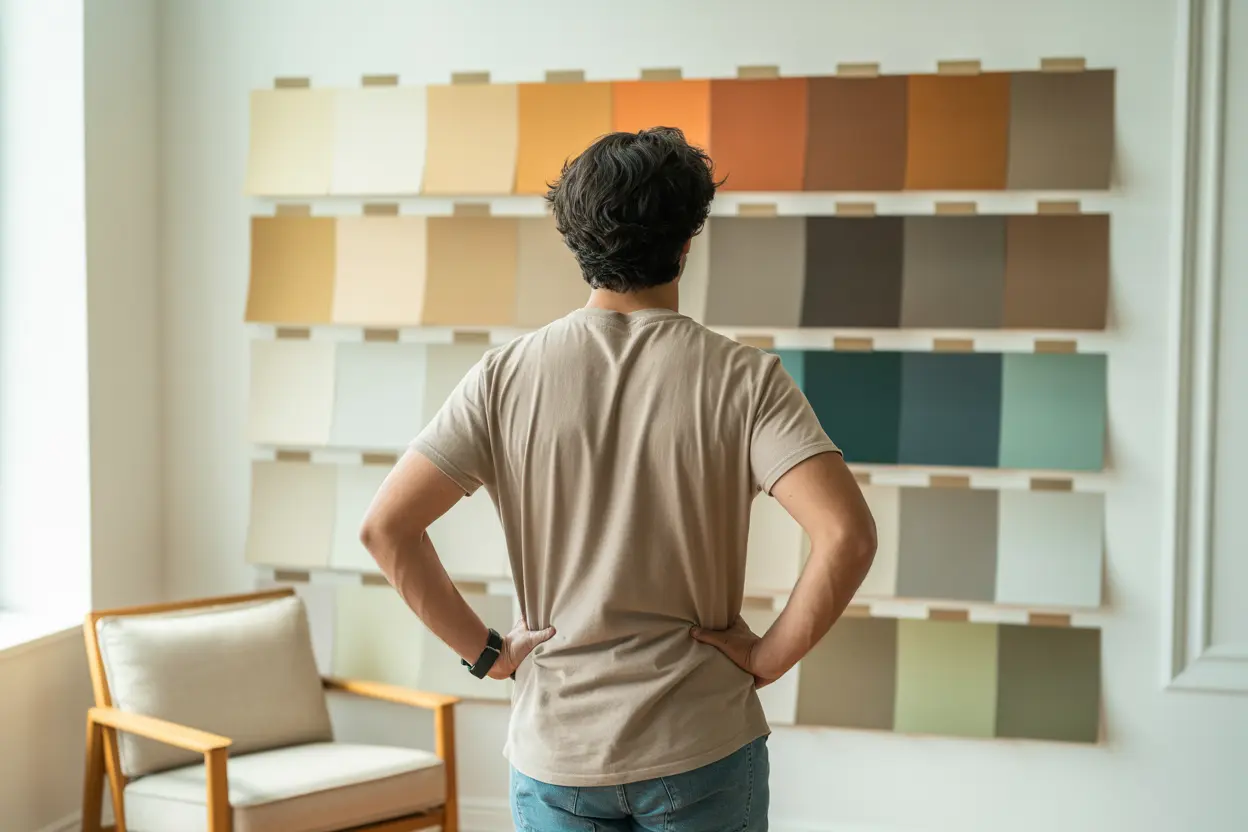


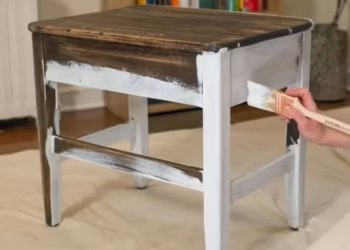
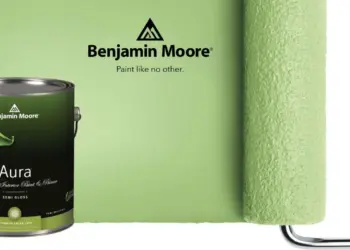

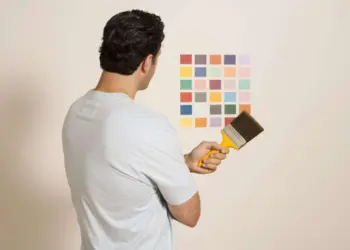




There are way too many ads and pop up ads all over this page. I am sure the information could be useful if not so cluttered.